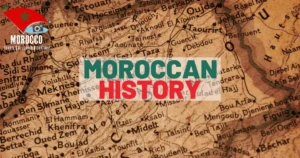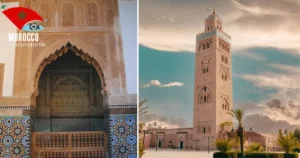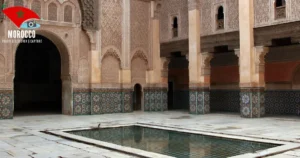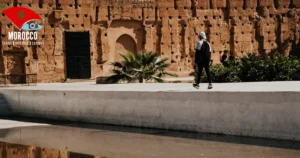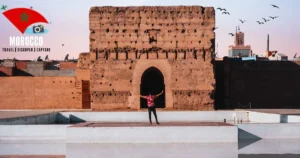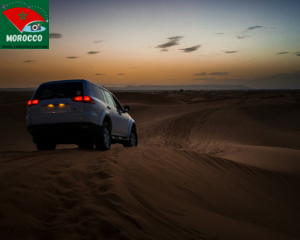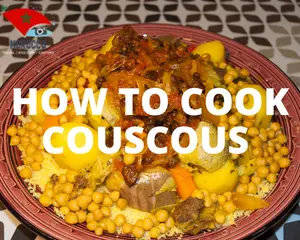Moroccan history is a captivating tapestry woven with threads of ancient civilizations, diverse cultures, and a resilient people. In this article, we embark on a journey through time, exploring the rich and complex history that has shaped modern-day Morocco.
Introduction to Moroccan history
Morocco’s history is a mosaic of influences, from its prehistoric roots to the present day. Understanding this history is essential for grasping the nation’s identity and its place in the global context.
Ancient Roots
Prehistoric Morocco
Morocco’s history traces back to prehistoric times when it was inhabited by Berber tribes. The region’s unique geography played a pivotal role in shaping the early societies that called Morocco home.
Phoenician and Carthaginian Influences
As maritime trade routes expanded, Phoenician and Carthaginian influences reached the shores of Morocco. These interactions laid the foundation for the region’s integration into the wider Mediterranean world.
Roman Era in Morocco
The Roman era brought with it significant developments, including the establishment of thriving cities and the introduction of Christianity. The archaeological remnants of this period still dot the Moroccan landscape.
Islamic Influence
Arrival of Islam
The 7th century witnessed the arrival of Islam, transforming Morocco both culturally and politically. The spread of Islamic civilization laid the groundwork for the emergence of powerful dynasties.
Establishment of Islamic Dynasties
Dynasties like the Idrisids and the Almoravids left an indelible mark on Moroccan history, shaping its architecture, arts, and governance.
Golden Age of Islamic Civilization in Morocco
During the medieval period, Morocco experienced a golden age of cultural and intellectual flourishing. Scholars and artists contributed to the broader Islamic civilization, creating enduring legacies.
Berber Dynasties
Almoravid Dynasty
The Almoravid Dynasty played a crucial role in unifying Morocco and extending its influence across North Africa and Spain.
Almohad Dynasty
Following the Almoravids, the Almohad Dynasty emerged, leaving its imprint on Moroccan architecture and governance.
Merinid Dynasty
The Merinid Dynasty, known for its capital in Fes, marked a period of artistic and intellectual achievements.
European Colonization -Moroccan history-
Portuguese and Spanish Presence
The 15th century brought European powers, including the Portuguese and Spanish, to Moroccan shores, leading to a complex interplay of cultures and conflicts.
French and Spanish Protectorates
In the 20th century, Morocco became a French and Spanish Protectorate, profoundly impacting its political and social landscape.
Impact of Colonization on Moroccan History
The legacy of colonization still echoes in modern Morocco, influencing its socio-economic structures and political dynamics.
Independence and Modern Era -Moroccan history-
Achieving Independence
Morocco gained independence in 1956, marking a new chapter in its history and the beginning of efforts to modernize the nation.
Post-Independence Challenges
The post-independence era brought challenges, including political instability and economic struggles.
Modern Developments in Morocco
Despite challenges, Morocco has made significant strides in various fields, including infrastructure, education, and technology.
Cultural Heritage -Moroccan history-
Diverse Cultural Influences
Morocco’s cultural identity is a mosaic of Berber, Arab, and French influences, creating a unique blend that is celebrated globally.
UNESCO World Heritage Sites in Morocco
The country boasts multiple UNESCO World Heritage sites, showcasing its rich cultural and historical heritage.
Rich Moroccan Traditions
From the vibrant markets of Marrakech to the intricate designs of Moroccan ceramics, the nation’s traditions are a testament to its rich history.
Economic Progress
Economic Growth in Recent Decades
Morocco has experienced notable economic growth, diversifying its industries and attracting foreign investments.
Key Industries and Sectors
Tourism, agriculture, and manufacturing contribute significantly to Morocco’s economic landscape.
Challenges and Opportunities
While progress is evident, challenges such as unemployment and income inequality persist, presenting opportunities for strategic interventions.
Tourism in Morocco
Popular Tourist Destinations
Morocco’s diverse landscapes, historic cities, and cultural experiences make it a popular destination for travelers.
Unique Attractions
From the Sahara Desert to the Atlas Mountains, Morocco offers a range of unique attractions that captivate visitors.
Impact of Tourism on the Economy
Tourism plays a vital role in Morocco’s economy, providing employment and contributing to foreign exchange reserves.
Political Landscape
Constitutional Monarchy in Morocco
Morocco’s political system is characterized by a constitutional monarchy, with the king playing a central role.
Political Reforms and Stability
The nation has undertaken political reforms aimed at fostering stability and democratic governance.
Role of the Monarchy in Moroccan Politics
The monarchy continues to be a unifying force, contributing to political stability and national cohesion.
Challenges and Opportunities
Socio-Economic Challenges
Addressing socio-economic challenges, including poverty and access to education, remains a priority.
Opportunities for Growth
Investments in renewable energy, technology, and education present avenues for sustained growth.
Morocco on the Global Stage
Morocco’s diplomatic engagements position it as a key player in regional and global affairs.
Morocco’s Contribution to the World -Moroccan history-
Cultural Contributions
Morocco’s music, art, and literature have left an indelible mark on global culture.
Diplomatic Influence
The nation’s diplomatic efforts contribute to regional stability and cooperation.
Morocco’s Role in Regional Stability
Morocco actively engages in initiatives aimed at fostering peace and stability in the region.
Future Outlook
Emerging Trends
Technological advancements, youth empowerment, and sustainable practices shape Morocco’s future.
Prospects for Continued Growth
Continued investments in key sectors position Morocco for sustained economic and social growth.
Challenges on the Horizon
Environmental concerns, regional conflicts, and global economic shifts pose challenges that require strategic planning.
Conclusion – Moroccan history-
In conclusion, Moroccan history is a dynamic narrative of resilience, adaptation, and cultural richness. Understanding this history provides valuable insights into the nation’s present and future. As Morocco continues to evolve, its story remains a compelling tapestry that beckons exploration.
FAQs -Moroccan history-
Q: What is the brief history of Morocco?
Morocco’s history encompasses ancient Phoenician and Roman influences. Arab-Islamic rule began in the 7th century. Berber dynasties, like the Almoravids and Almohads, dominated from the 11th to 13th centuries. European powers, mainly Spain and Portugal, entered in the 15th century. The Alaouite dynasty took over in the 17th century. European colonization in the early 20th century ended with Morocco’s independence in 1956. King Mohammed VI, since 1999, leads the constitutional monarchy. Challenges include political reforms and the Western Sahara conflict. Morocco today balances modernization with a rich cultural heritage
Q: What is the origin of Moroccans?
Moroccans have diverse origins, mainly Arab-Berber, shaped by historical influences from Arab settlers, Berber indigenous people, and various civilizations.
Q: Is Morocco Arabic or African?
Morocco is both Arabic and African. It is located in North Africa and has a predominantly Arab-Berber population.
Q: What was the name of Morocco before it was Morocco?
Before it was named Morocco, the region was known by various names throughout history. In classical antiquity, it was referred to as “Mauretania” by the Romans. Later, during the Islamic period, it was part of the larger Maghreb region and was often called “Maghreb al-Aqsa” or the “Far West” in Arabic. The specific names varied depending on the historical period and the ruling powers at the time.
LSI Keywords: Moroccan architecture, Berber civilization, Sahara trade routes, Morocco independence, Moroccan folklore, Moroccan history
